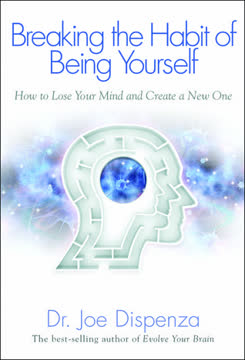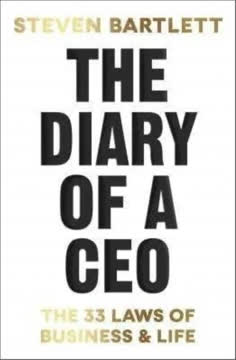重点摘要
1. 解锁大脑潜能:内在的源泉
“我们完全有能力在更多的时间里利用更多的大脑力量。我们之所以没有这样做,是因为我们没有意识到大脑可以多么聪明、灵活和敏捷。”
源泉是你未开发的潜能。 它代表了你大脑的全部力量,涵盖了有意识和潜意识的过程。通过理解和利用源泉,你可以解锁非凡的能力,创造你想要的生活。
源泉的关键组成部分:
- 情商
- 身体意识
- 直觉
- 动力
- 逻辑思维
- 创造力
要利用源泉,练习整合这些组成部分,发展一个更敏捷、平衡的大脑。这包括挑战现有的思维模式,接受新体验,并培养成长心态。
2. 利用神经可塑性重塑你的思维
“我们的脑子在不断进化、精炼和学习,以应对我们所经历的一切——事件、情感和人——我们需要意识到这一点,并管理我们暴露给大脑的内容以及我们如何处理这些影响。”
你的大脑是可塑的。 神经可塑性,即大脑在一生中形成新的神经连接和适应的能力,是个人转变的关键。通过理解这一概念,你可以主动重塑你的思维模式和行为。
增强神经可塑性的策略:
- 参与新奇的体验
- 练习有意的、专注的注意力
- 挑战自己学习新技能或知识
- 保持健康的生活方式(睡眠、营养、锻炼)
- 培养正念和冥想习惯
记住,改变需要持续的努力和耐心。当你努力创建新的神经通路时,可能会遇到阻力或不适。接受这些挑战,视其为成长和转变的标志。
3. 掌控情绪以获得更大的控制力
“无论我们是否承认,我们都是情感的生物。我们做出的每一个决定都受到情感的影响。”
情绪掌控至关重要。 识别和管理你的情绪是解锁源泉的基础。通过发展情商,你可以做出更好的决策,改善人际关系,更有效地应对生活的挑战。
提高情商的步骤:
- 通过写日记或冥想练习自我意识
- 学会准确识别和标记情绪
- 发展调节强烈情绪的策略
- 培养同理心和社会意识
- 将情绪作为决策的有价值数据
记住,掌控情绪并不意味着压抑它们。而是要理解其根本原因,承认其存在,并选择如何回应而不是冲动反应。
4. 加强身心连接
“内感受通常是一个难以理解的概念,除非你做瑜伽或参与需要身体反馈的运动。你在身体中越扎根和存在,你的内感受能力就越强,但这绝对是可以培养的。”
你的身体蕴藏着宝贵的智慧。 内感受,即感知和解释内部身体信号的能力,是自我意识和决策的重要方面。通过加强身心连接,你可以利用大量的信息来指导你的选择并改善整体健康。
增强身心意识的技巧:
- 定期进行身体扫描
- 参与正念运动(瑜伽、太极、舞蹈)
- 在情感体验中注意身体感觉
- 进行呼吸练习和冥想
- 记录身体和情感体验的日记
随着你发展这种连接,你会变得更加敏锐地感知身体的微妙信号,如压力或疾病的早期迹象。这种意识可以帮助你做出支持健康的主动选择。
5. 信任直觉:直觉的力量
“肠道不是第二大脑;它包含了自主神经系统的一个主要分支——肠神经系统,它无意识地工作(就像你呼吸和心跳不需要任何有意识的大脑干预一样)。”
直觉是一种宝贵的智慧。 直觉常常被认为是不科学的,实际上是大脑、肠道和积累的生活经验之间的复杂互动。学习信任和完善你的直觉可以带来更好的决策和对自己及他人的更深理解。
发展直觉的方法:
- 练习正念以平息心灵杂念
- 在做决定时注意身体感觉
- 反思过去直觉正确的经历
- 在低风险情况下尝试跟随直觉
- 通过适当的营养和益生菌保持肠道健康
记住,直觉最好与逻辑思维结合使用,而不是替代它。努力在直觉和分析方法之间找到平衡,以做出更好的决策。
6. 培养韧性和目标驱动的动力
“拥有强烈的目标感与幸福感相关;它确保我们有目标导向,由对特定结果的渴望驱动,这使我们有毅力继续前行。”
目标激发韧性。 明确的目标感在挑战时期起到锚定作用,并提供在面对障碍时坚持下去的动力。通过识别和连接你的核心价值观和长期目标,你可以发展更大的韧性和动力。
建立韧性和目标的策略:
- 识别你的核心价值观并与之对齐目标
- 将大目标分解为小的、可管理的步骤
- 练习将挫折重新框定为成长机会
- 培养志同道合的支持网络
- 定期反思你的进展并根据需要调整方法
记住,韧性不是避免失败,而是更强地反弹。接受挑战,视其为成长和完善目标感的机会。
7. 平衡逻辑和创造力以优化决策
“从神经可塑性的角度来看,我们需要重新训练自己,适度利用逻辑和理性,以最大化和校准其他路径,每当我们面对新情况时。”
整合逻辑和创造力。 优化决策需要在分析思维和创造性解决问题之间找到平衡。通过发展逻辑和创造力,你可以从多个角度应对挑战,并产生创新的解决方案。
增强逻辑和创造性思维的技巧:
- 练习结构化的问题解决方法
- 参与创造性练习,如头脑风暴或思维导图
- 寻求多样化的观点和信息来源
- 挑战假设并考虑替代观点
- 使用可视化技术探索潜在结果
努力培养认知灵活性,使你能够根据情况需求在逻辑和创造性思维模式之间切换。这种平衡将使你做出更全面和有效的决策。
8. 通过可视化实现理想未来
“可视化之所以有效,是因为大脑在直接体验外部世界的事件和强烈想象的同一事件(加上有时想象的行动)之间几乎没有区别。”
可视化是一种强大的工具。 通过生动地想象你想要的未来,你可以让大脑识别机会并采取与目标一致的行动。可视化技术可以帮助你克服限制性信念,并建立对自己创造积极变化的信心。
有效可视化的步骤:
- 创建详细的心象,描绘你想要的结果
- 在可视化中调动所有感官
- 定期练习,最好每天
- 将可视化与积极的肯定结合
- 根据你的可视化采取灵感行动
记住,可视化不是被动的白日梦,而是积极地为成功编程你的大脑。将其作为工具来补充和指导你的现实行动。
9. 练习正念以增强专注和意识
“发展我们的情感素养,在情绪出现时在心中注意并标记它们。研究表明,定期冥想的人比不冥想的人有更高的情感素养和控制力,情绪也更稳定。”
正念提升源泉。 定期的正念练习可以增强你的专注力、情绪调节和整体幸福感。通过培养当下的意识,你可以减少压力,改善决策,并获得更深层次的洞察力和创造力。
可以尝试的正念技巧:
- 每日冥想练习(从5-10分钟开始)
- 正念呼吸练习
- 身体扫描冥想
- 正念饮食或步行
- 将正念融入日常活动(如刷牙、洗碗)
随着你发展正念练习,你可能会注意到你的专注力、情绪管理能力和在生活挑战中保持冷静的能力有所改善。
10. 采取行动:将思想转化为具体结果
“神经可塑性由重复引导,无论是好是坏,所以值得记住的是,消极思维和成瘾行为可以自我延续,进一步嵌入焦虑、抑郁、强迫思维和攻击性。”
行动巩固改变。 虽然理解和可视化很重要,但真正的转变通过持续的、有意的行动发生。通过采取步骤在日常生活中实施源泉的原则,你可以创建支持你期望改变的持久神经通路。
采取有效行动的策略:
- 设定与愿景一致的具体、可衡量的目标
- 制定具有明确、可管理步骤的行动计划
- 建立问责系统(如伙伴、教练、支持小组)
- 跟踪进展并庆祝小胜利
- 定期反思你的经验并根据需要调整方法
记住,改变是一个过程,而不是一个事件。在你努力实施新习惯和新思维方式时,对自己要有耐心。持续的小行动随着时间的推移会带来显著的转变。
最后更新日期:
FAQ
What's The Source about?
- Mind and Brain Connection: The Source by Tara Swart explores the link between neuroscience and personal development, focusing on how thoughts and emotions shape reality.
- Four-Step Program: It introduces a four-step program—awareness, action, attention, and practice—to unlock the brain's potential and rewire neural pathways for better life outcomes.
- Science and Spirituality Integration: Swart combines scientific research with spiritual concepts, like the law of attraction, to offer a comprehensive toolkit for personal transformation.
Why should I read The Source?
- Empowerment through Knowledge: The book provides insights into how the brain works, empowering readers to control their thoughts and emotions for personal growth.
- Practical Techniques: It offers exercises like visualization and action boards, backed by scientific research, to help manifest goals effectively.
- Holistic Approach: Swart's integration of scientific and spiritual perspectives appeals to those interested in self-improvement, emphasizing emotional intelligence alongside logical thinking.
What are the key takeaways of The Source?
- Neuroplasticity is Key: The book highlights the brain's ability to change and adapt, allowing for the development of new habits and behaviors through effort and practice.
- Mind-Body Connection: Understanding the brain-body connection is crucial for overall well-being, as physical and mental states influence each other.
- Harnessing Emotions: Mastering emotions is vital for personal success, with strategies provided for emotional regulation to enhance decision-making and relationships.
What is the four-step process outlined in The Source?
- Raised Awareness: Identify subconscious behaviors and thought patterns that may be holding you back, allowing for change.
- Action Board: Create a visual representation of goals to serve as motivation and focus on achievements.
- Focused Attention: Practice mindfulness to enhance the ability to respond thoughtfully rather than reactively.
- Deliberate Practice: Consistently apply insights to create lasting change, setting specific actions to overcome barriers.
How does The Source define emotional intelligence?
- Understanding Emotions: Emotional intelligence involves recognizing, understanding, and managing your own and others' emotions, crucial for communication and relationships.
- Regulating Emotional Responses: The book emphasizes regulating emotions to avoid being overwhelmed, allowing for resilience and clarity in challenges.
- Impact on Decision-Making: Emotional intelligence influences decision-making, enabling informed and balanced choices by being aware of emotional triggers.
What is the law of attraction as described in The Source?
- Manifesting Desires: The law of attraction involves focusing on positive thoughts to attract positive outcomes, grounded in neuroscience rather than wishful thinking.
- Six Principles: Swart outlines principles like abundance, manifestation, and universal connection, supported by scientific evidence and practical applications.
- Intention Setting: Setting clear intentions aligns heart, mind, and gut, creating a powerful starting point for manifesting desires.
How does visualization work in The Source?
- Brain's Response to Imagery: Visualization engages the brain similarly to actual experiences, activating neural pathways as if experiencing the event.
- Creating a Mental Blueprint: Visualizing goals creates a mental blueprint guiding actions, reinforcing positive thinking and opportunity recognition.
- Sensory Integration: Effective visualization involves engaging all senses, enhancing the brain's connection to desired outcomes, making them feel attainable.
What is neuroplasticity, and why is it important in The Source?
- Brain's Ability to Change: Neuroplasticity allows the brain to reorganize by forming new connections, enabling changes in thought patterns and behaviors.
- Overcoming Limitations: Understanding neuroplasticity empowers overcoming limiting beliefs and habits, reshaping the brain for healthier lifestyles.
- Practical Applications: Techniques like mindfulness and journaling reinforce new pathways, promoting lasting change through consistent practice.
How can I create an action board as described in The Source?
- Collect Meaningful Images: Gather images that resonate with your goals, evoking positive emotions and representing aspirations.
- Organize and Arrange: Lay out images on a board, grouping by themes like career and health, placing important ones prominently.
- Display Your Action Board: Place the board in a visible location for daily exposure, reinforcing goals and motivation to take action.
How does The Source address emotional intelligence?
- Mastering Emotions: Emotional intelligence is crucial for success, with strategies for recognizing, understanding, and managing emotions effectively.
- Impact on Decision-Making: Regulating emotions improves decision-making, allowing for balanced responses to challenges.
- Building Relationships: Enhancing emotional intelligence fosters empathy and understanding, leading to healthier and fulfilling connections.
How does The Source address the concept of resilience?
- Bouncing Back from Adversity: Resilience is the ability to recover from setbacks, cultivated through emotional intelligence and mindfulness.
- Finding Purpose: A strong sense of purpose motivates resilience, driving perseverance through difficulties.
- Building Resilience through Practice: Strategies like reframing failures and practicing self-compassion strengthen coping abilities.
What are the best quotes from The Source and what do they mean?
- “Whether you think you can or you think you can’t—you’re right.” Highlights mindset's power in shaping reality, emphasizing belief's influence on outcomes.
- “I am the master of my fate; I am the captain of my soul.” Reflects personal responsibility and empowerment, reinforcing the ability to shape life through thoughts and actions.
- “Neurons that fire together, wire together.” Encapsulates neuroplasticity, reminding of the importance of consistent practice in creating lasting change.
评论
《源头》获得了褒贬不一的评价,评分从1星到5星不等。许多读者欣赏其对显化和可视化的科学方法,认为神经科学的解释很有趣。一些人称赞其中的实用练习和个人轶事。然而,批评者认为这本书缺乏原创性,重复了其他自助书籍的概念。有些人觉得它过于自传性或缺乏深度。总体而言,对于这一主题的新手读者来说,这本书更有价值,而那些熟悉类似概念的读者可能会觉得不那么令人印象深刻。
Similar Books














